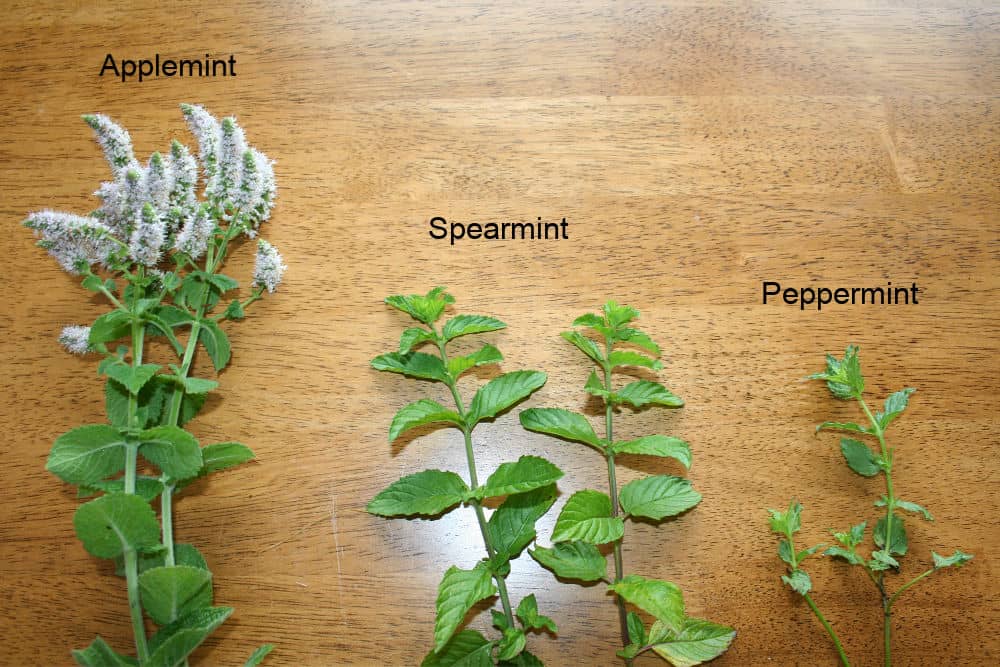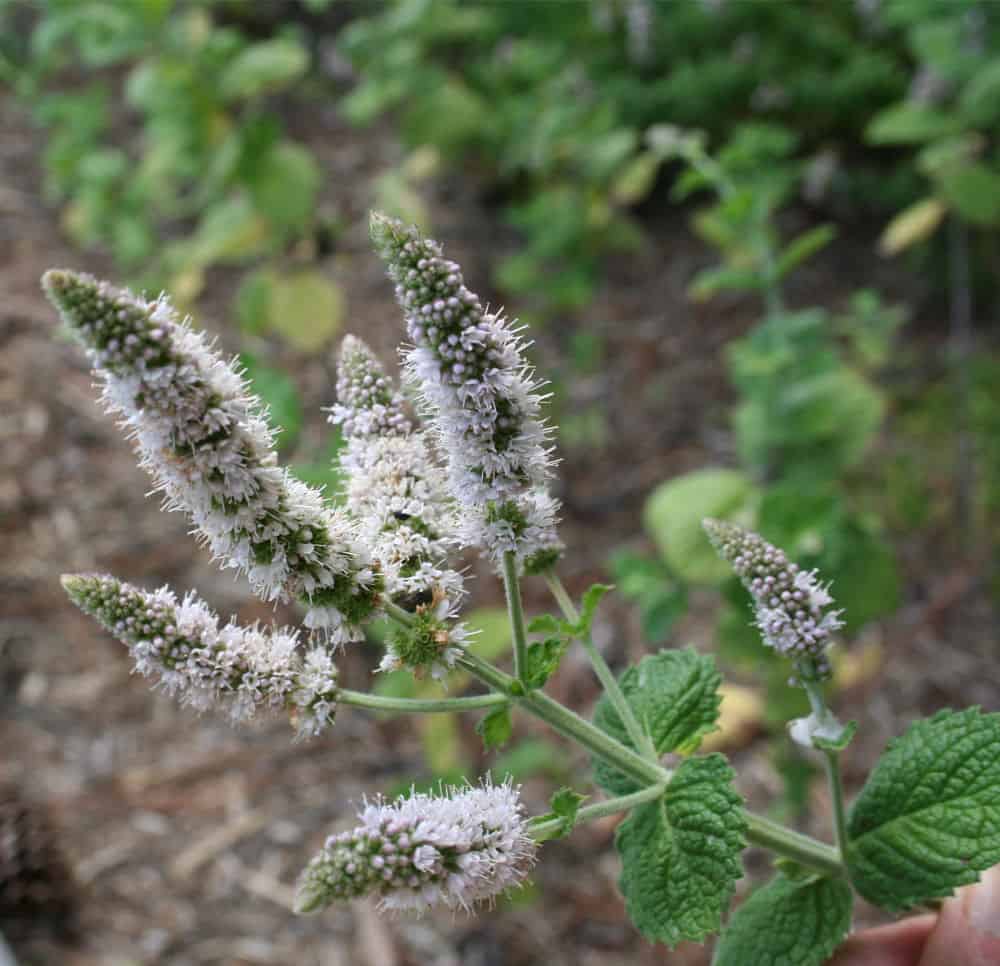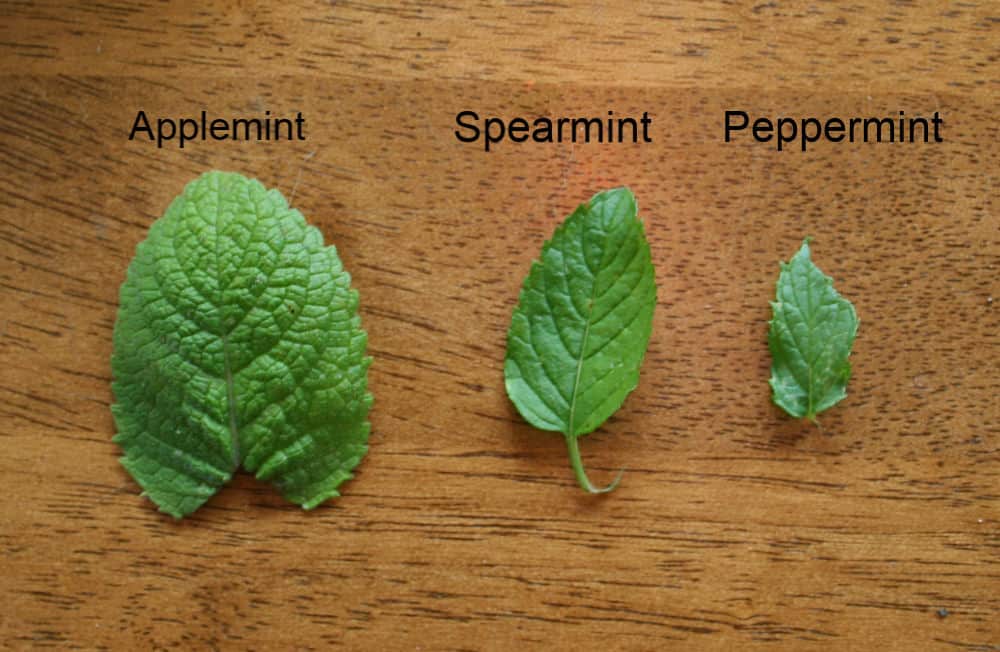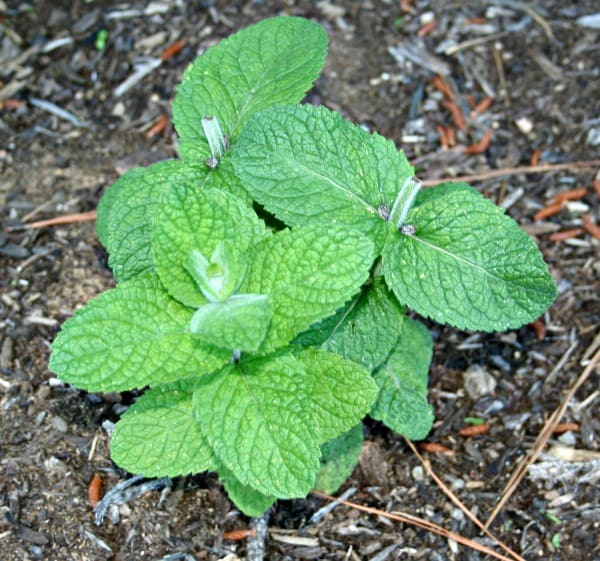There are many types of mint, but for gardeners, a few stand out for their aroma, taste, and easy growth habits. We’ll take a look at three that are very commonly grown for culinary and tea uses: applemint, spearmint, and peppermint.
Three Types of Mint
The Mint Family
There are over 600 types of mint that are known to horticulturists and probably more varieties out there than we know of worldwide. That’s because the entire genus mentha cross pollinates easily, creating new varieties. The flavor can also be influenced by the growing conditions, climate, and soil in which mint is grown in.
I had a good friend named A.J. who was a quest to find the same mint here in Virginia as he’d grown in his New Jersey garden. But like many people who inherit mint when they buy a house, his home in New Jersey had an unknown mint variety growing in the backyard; when he moved to Virginia, he didn’t take a piece of the plant with him to grow it again here, and thus he had a tough time finding his favorite variety.

Identifying Mint
The easiest way to identify mint growing wild or in an inherited garden is, of course, through the scent. All varieties of mint have a telltale ‘minty’ aroma, tinged with different odors depending on the actual variety.
Take a leaf between thumb and forefinger. Rub it gently. The volatile oils get on your fingers and you can sniff them from your fingertips. That’s the best way to get to know mint.
Another way to identify mint is by the stem. All mints have a square stem. The leaves are oblong, tapering to a narrow tip, with texture on the leaf top and a bit of tooth to the edges. Mints leaves vary from dark green of spearmint to light green of applemint and other delicious tastes.

Growing Mint
All types of mint thrive in sun, partial sun, or shade which means you can pretty much plant them anyway. In fact, they do so well in any kind of soil that they can rapidly overgrow their designated area. I once had mint spread from a raised bed into my lawn. It created a great aroma every time I mowed the lawn, but wasn’t conducive to making it into tea!
To keep mint contained, grow it in a pot or container. I have my peppermint growing in a container; the applemint is growing in the herb garden bed and spread under the gravel in the driveway, through brick edging and more. It’s really a strong, vigorous plant – and it means to stay!
The spearmint is less invasive but has still managed to double in size and weave between the crepe myrtle that designates the boundary (ha ha, as if my herbs respect any boundary) between the herb garden and the flower garden. My experience has been that spearmint is the slowest growing among the three types of mint I’ve chosen to discuss here.
Don’t fertilize your mint plants; don’t do anything, in fact, other than clip them back as needed and for harvesting. You can grow mint as a ground cover, ornamental plant, or for herbal uses.

Types of Mint: Applemint
Applemint produces large, flavorful leaves with a very mild mint taste. Many people enjoy sprinkling the leaves into salads. You can eat it raw or cook it into couscous and other dishes to add sweet mint flavor. I dry applemint for teas, too.
Applemint also makes lovely mint jelly. If you enjoy making jelly, mint jelly can be made very similarly to how I made cranberry basil and lemon parsley jelly. I’ll try to make some this summer to share my recipe with you.
Types of Mint: Spearmint
Among the three types of mint, I must say that spearmint is my absolute favorite. It’s strong when you grow it in the garden; the spearmint flavor almost burns your tongue if you make a cup of tea with too much mint!
Spearmint has deep, dark green leaves and a lower growth habit than applemint. I love it made into teas and dry the leaves in my dehydrator for wintertime mint teas.
Types of Mint: Peppermint
Among the three types of mint, peppermint is probably the one most people think of when they think “mint.” It has a high concentration of menthol, the chemical that gives it the minty smell so familiar to most people. It can be made into teas, face washes, candies and more.
Regular peppermint plants are lower-growing than most and vigorous spreaders. Their rhizomes, the root system that gives mint the power to spread like a mat throughout most soils, is very eager to keep growing, so if you don’t want it taking over your garden, grow it in a container.

With over 600 varieties of mint to choose among, all easy to grow in Virginia and similar areas, you’re sure to find the flavor that’s great for your needs. Mints make great teas — there’s nothing quite as refreshing as a cup of mint iced tea on a hot summer’s day.






[…] mint offers a variety of health benefits similar to all members of the mint family. Like its cousin, peppermint, it offers a refreshing feeling when brewed into a cold or hot […]